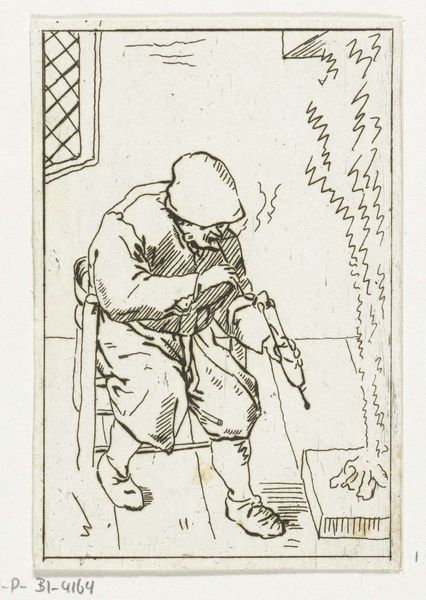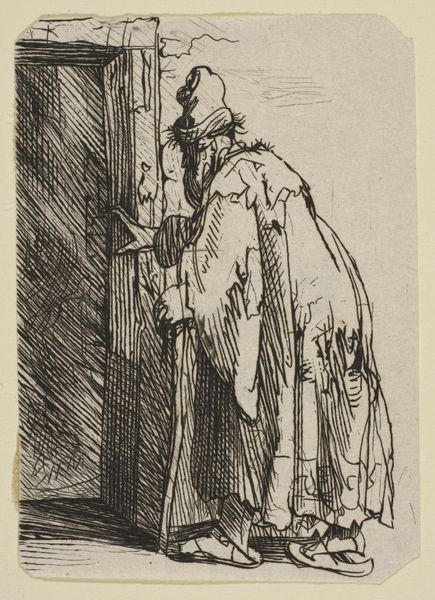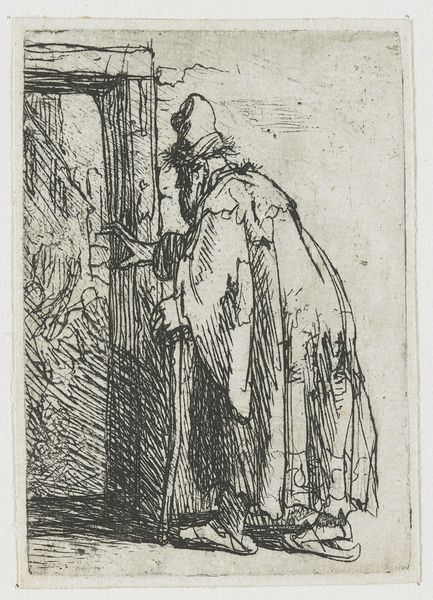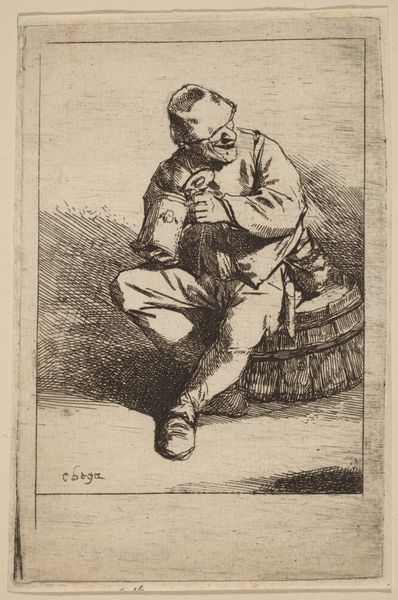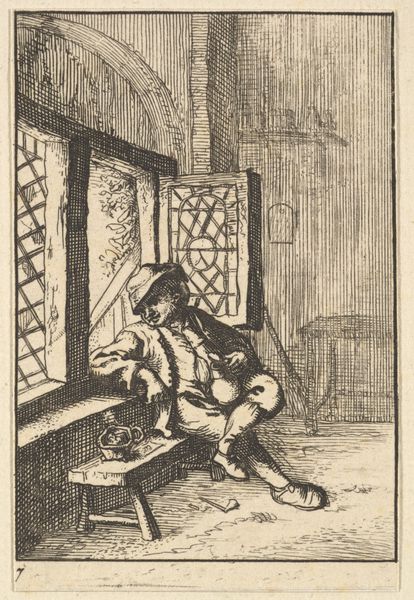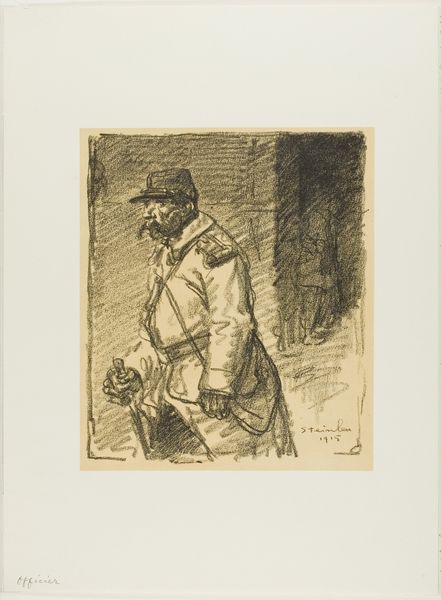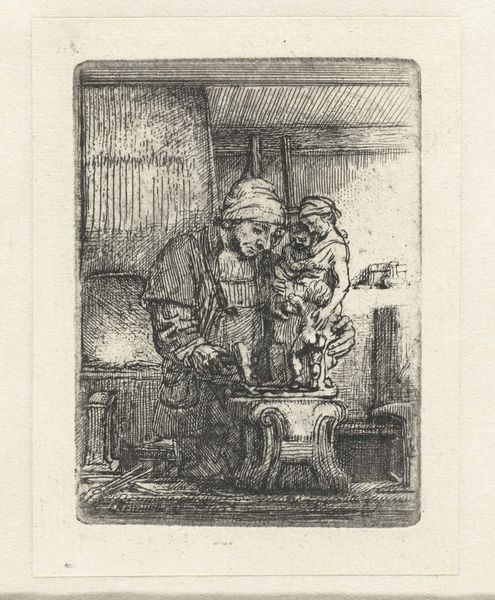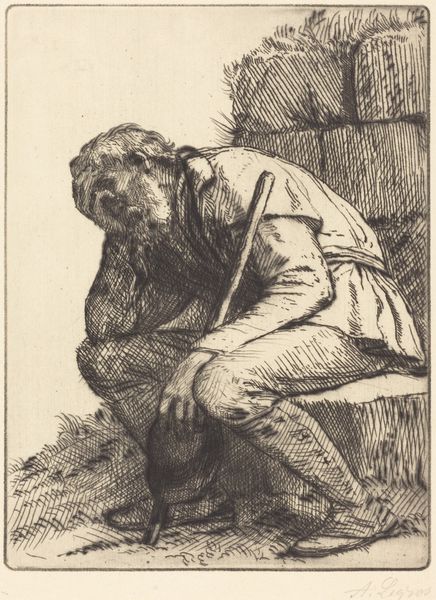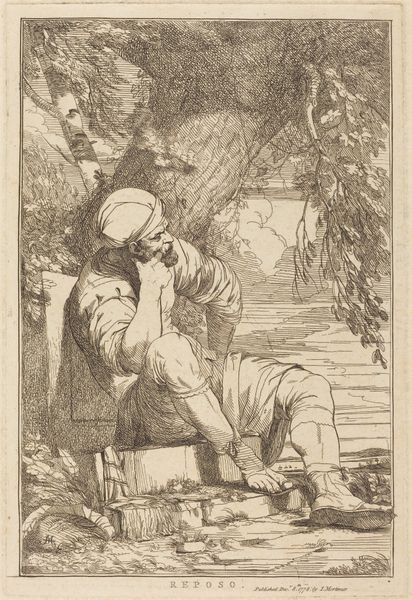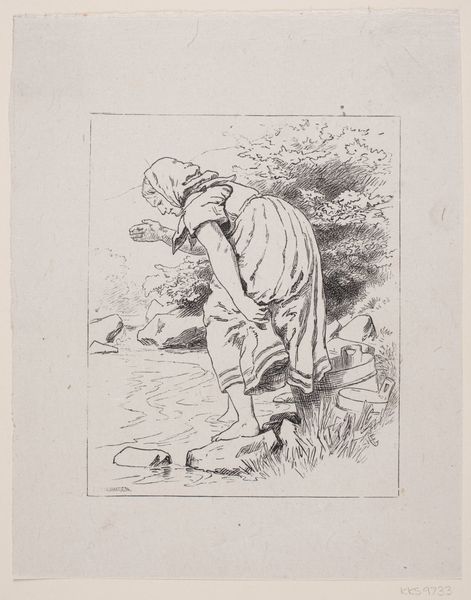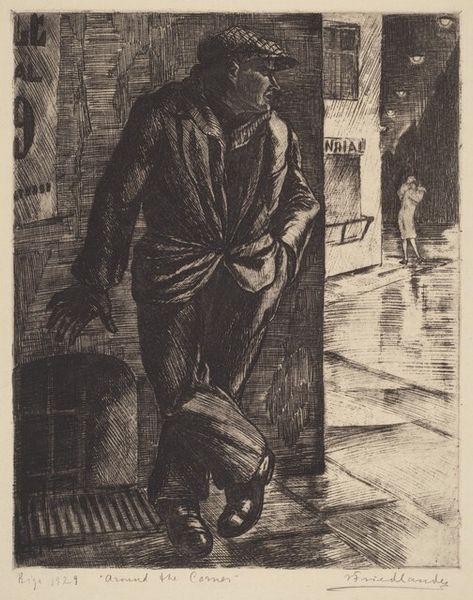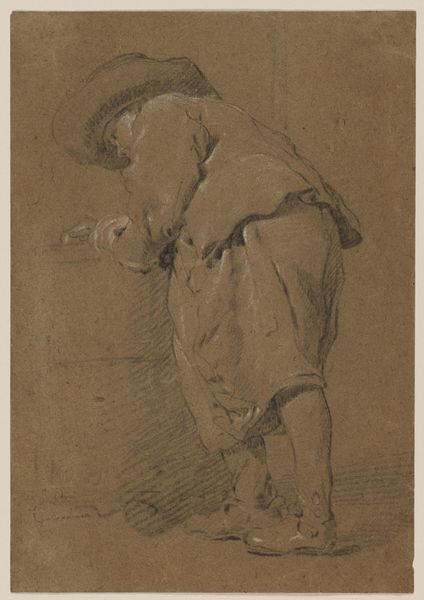
drawing, ink, pen
#
portrait
#
drawing
#
pen illustration
#
ink
#
pen-ink sketch
#
sketchbook drawing
#
pen
#
genre-painting
Dimensions: height 95 mm, width 63 mm
Copyright: Rijks Museum: Open Domain
Curator: Anthonie van den Bos's "Man Steekt Zijn Pijp Aan," a genre scene rendered in pen and ink, catches the eye here at the Rijksmuseum. What are your initial impressions? Editor: It has a raw quality to it, almost like a candid shot. The diagonal composition is intriguing; it pulls the eye down and to the right, following the smoker’s gesture and the flow of smoke. Curator: Absolutely, the use of line work is quite evocative, lending itself to the representation of everyday life. Think about what pipe smoking may have meant then—a leisure activity linked to male bonding and, increasingly, to Dutch colonial enterprises through tobacco. Editor: Let’s focus on that act of lighting the pipe. You see the hand holding a burning spill toward the bowl of the pipe – how meticulously observed. The process of creating fire, providing the means for relaxation. Curator: Right, this piece resonates deeply with 18th- and 19th-century Dutch society, particularly its intricate ties to tobacco cultivation and global trade. The image subtly touches on the dynamics of labor, leisure, and even empire. Editor: There's the wood-paneled wall in the drawing that reminds me of a Delft interior. This rendering, through humble materials and simple scene, provides us glimpses of a space in someone's life. Curator: And we can not deny how that interior situates the man within his culture, subtly signaling class and belonging. We have the smoke almost dancing freely in the confined place: a symbol of aspiration and transgression? Editor: Transgression is the right word, I would say. By making and then presenting smoke through ink on paper the artist alludes to not only to process, but also to the freedom for creativity which both men take. Curator: A truly valuable point. "Man steekt zijn pijp aan" provides a multilayered experience, allowing a complex dive into themes of class, empire, identity, and labor practices woven into Dutch life at the time. Editor: And through studying those material processes, the social position of the smoker comes even more alive, don't you think?
Comments
No comments
Be the first to comment and join the conversation on the ultimate creative platform.
